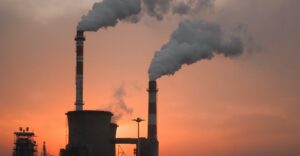20 carbon capture projects shortlisted for government funding
20 carbon capture projects have been selected to go through to the next stage of the government’s Carbon Capture, Usage, and Storage (CCUS) cluster process.
The Prime Minister has committed to delivering two industrial clusters of CCUS by the mid-2020’s to decarbonise industry and establish the UK’s role in the growing carbon capture market.
Projects from across the North East, Humber North West England and North Wales which have been selected will now be considered for government funding to support them in joining one of these clusters.
This includes the HyNet Hydrogen Production Project in the North West which aims to capture CO2 produced by industry, while also to replace fossil fuels with low carbon hydrogen.

The East Coast cluster selected also includes the Net Zero Teeside Power cluster, a fully integrated gas-fired power and carbon capture project with the ability to produce 860 megawatts of low carbon electricity.
These will be considered for support under the government’s CCUS Programme, which includes the £1bn CCS Infrastructure Fund (CIF).
The UK has the largest potential for carbon capture facilities in Europe, according to the Department for Business, Energy and Industrial Strategy, which cites the North Sea as its greatest asset for storing captured carbon under the seabed.
The government has also said the CCUS cluster process could create 50,000 skilled green jobs in the UK by 2030.
It’s currently unclear exactly how effective CCUS facilities are, with recent analysis showing that estimations of stored carbon compared with official reports shows that the amount greenhouse gas captured is actually between 19 and 30% lower than experts thought.
However, a new highly efficient carbon capture system has been invented by researchers at Tokyo Metropolitan University which could change this.
A team led by Professor Seiji Yamazoe have found that the chemical isophorone diamine (IPDA) could remove carbon dioxide at the low concentrations found in the atmosphere with 99% accuracy.
Photo by Alexander Tsang












